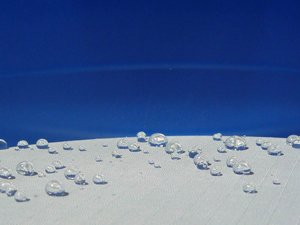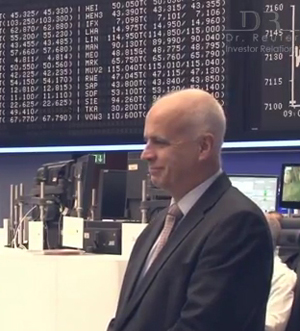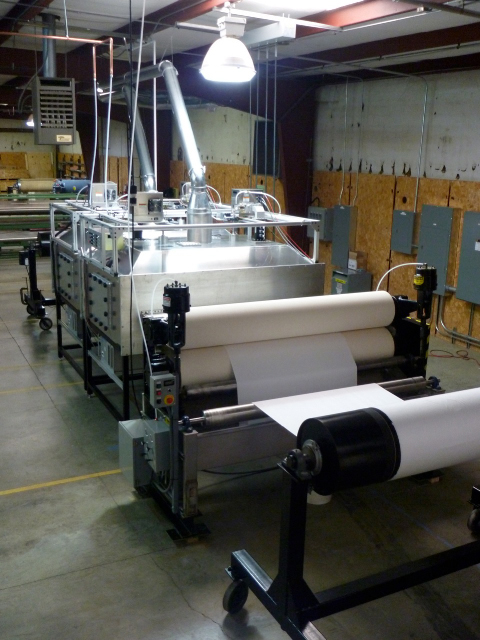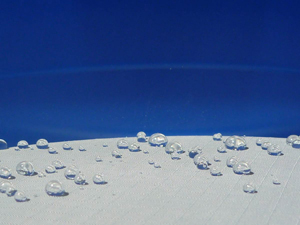
Eurofins receives WRAP accreditation in India
Opinion


Alexium's ‘nanoscopic shrink-wrap' gains traction Adrian Wilson reports It's been a year of solid achievement for Alexium in commercialising its potentially disruptive RST technology. The company is working with major prospective commercial partners and also started-up a new production line at its headquarters in Greer in South Carolina, USA, which triples its capacity. And Alexium's Business Development Director John Almond reports that the first mass market application for RST are getting c

16th November 2011
Adrian Wilson
|

It's been a year of solid achievement for Alexium in commercialising its potentially disruptive RST technology.
The company is working with major prospective commercial partners and also started-up a new production line at its headquarters in Greer in South Carolina, USA, which triples its capacity. And Alexium's Business Development Director John Almond reports that the first mass market application for RST are getting closer, with what he calls a "nanoscopic shrink-wrap" textile coating solution.
RST - Reactive Surface Technology - is patented microwave driven chemistry which enables the nanoscopic coatings to be applied on to a wide range of fibres in a continuous reel-to-reel process - essential for compatibility with existing textile manufacturing equipment.
"The thing to understand is that certain fibres such as aramids, polypropylene and nylon are relatively inert and don't have very reactive surfaces," says Mr Almond.
"Commonly, conventional textile coatings rely on chemical bonding with the surface of the material which can be challenging without these reactive sites."
 "RST coatings, however, can covalently bond to the surface of the fibre or when that is not possible form a nanoscopic intractable coating - the shrink wrap effect - around the individual fibres. The process is fast and environmentally friendly, enabling single or multi-functional coatings to be applied to most fibres almost regardless of their surface chemistry."
"RST coatings, however, can covalently bond to the surface of the fibre or when that is not possible form a nanoscopic intractable coating - the shrink wrap effect - around the individual fibres. The process is fast and environmentally friendly, enabling single or multi-functional coatings to be applied to most fibres almost regardless of their surface chemistry."
The process is based on organosilanes - silicon-containing chemicals that contain both organic and inorganic functionalities in the same molecule - which are already widely used as coupling agents across a range of industries and commercially manufactured by the likes of Bluestar, Degussa, Dow Corning, Evonik and Wacker.
The RST treatment can provide many properties including water and oil repellency, antimicrobial, non-stick and flame retardancy. The challenge for Alexium, says Mr Almond, has been in identifying those markets and applications to which the technology can be most successfully applied. Displacing existing technologies is difficult and time consuming because prospective customers need to be totally convinced of both the technical and financial merits before initiating change.
"Ideally we wanted to focus on unmet needs and where we can demonstrate how the unique aspects of our technology adds value throughout the supply chain," Mr Almond said.
"We're certainly looking at high value applications involving speciality fibres. High molecular weight polyethylene (HMWPE) and aramid fabrics for example, are being increasingly employed in composites and other technical applications, areas where we believe RST coatings could be highly beneficial."
 Environmentally-friendly flame retardant coatings (FR) for selective synthetic fabrics is another exciting market where Alexium felt that the RST process offered exceptional opportunities.
Environmentally-friendly flame retardant coatings (FR) for selective synthetic fabrics is another exciting market where Alexium felt that the RST process offered exceptional opportunities.
"Stricter environmental regulations globally has meant that there is now an urgent need for an environmentally friendly non-halogenated surface FR treatment," Mr Almond said.
"It's an area where the company has invested considerable resources over recent months and where it is seeing some exciting progress. However, a new application like this demands exhaustive testing, not only to ensure regulatory compliance but equally importantly that the inherent properties of the fabric are not compromised after the treatment. Alexium believes that it is worth the effort expended given the immense commercial opportunities that this application presents."
Alexium's business model is based on licensing the RST treatment technology to commercial partners, and/or to jointly develop products for both the military and commercial sectors.
"Our new 24kW production unit at Greer is serving primarily to demonstrate the technology to prospective licensees, optimise various treatments for customers, and enable us to offer turn-key systems for licensees operating in full-scale production environments," Mr Almond concluded.
"Marketing and product placements will be conducted jointly with licensees as part of the commercial partnerships, depending on the application."

Business intelligence for the fibre, textiles and apparel industries: technologies, innovations, markets, investments, trade policy, sourcing, strategy...
Find out more